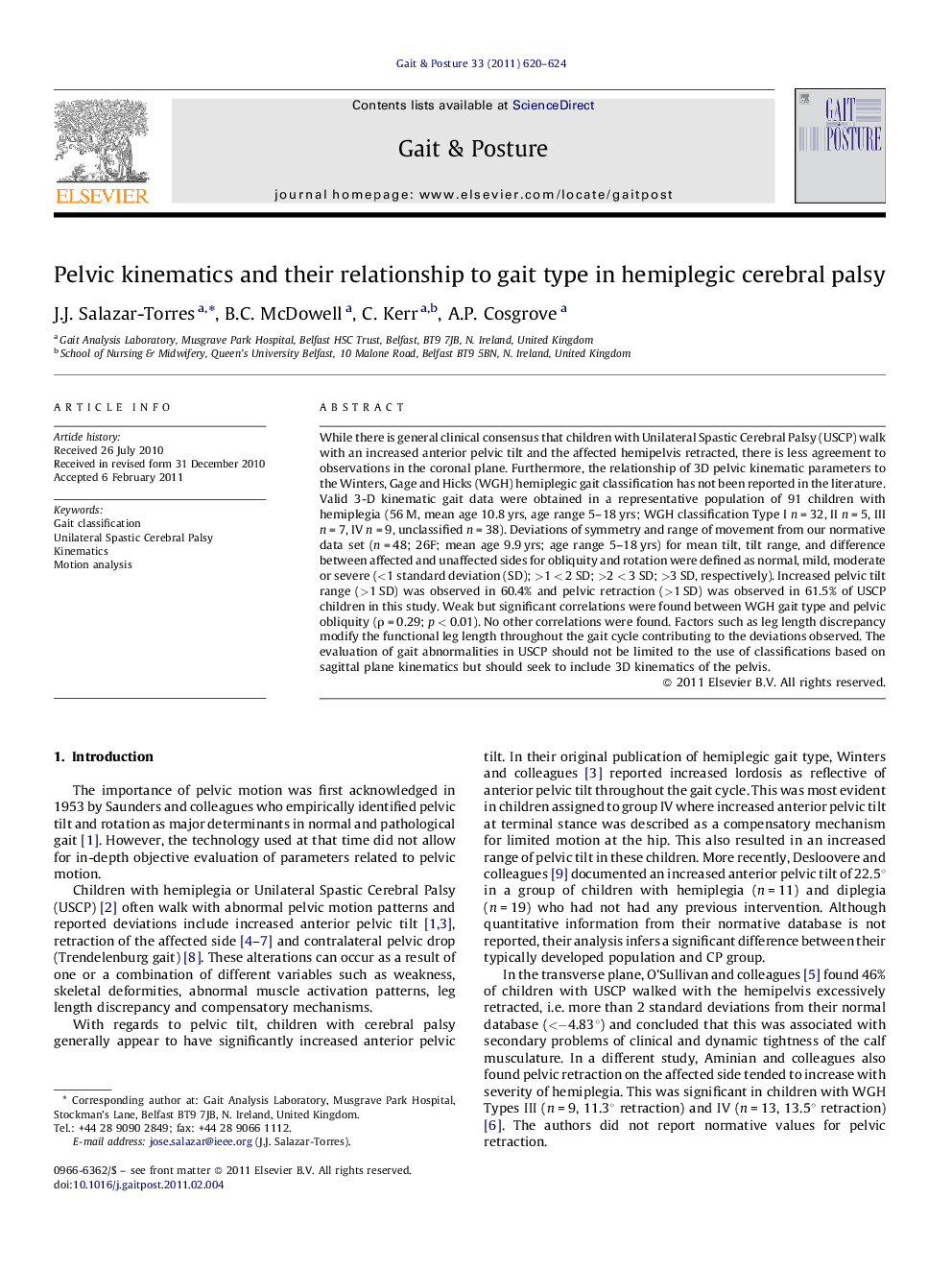| Article ID | Journal | Published Year | Pages | File Type |
|---|---|---|---|---|
| 6207177 | Gait & Posture | 2011 | 5 Pages |
While there is general clinical consensus that children with Unilateral Spastic Cerebral Palsy (USCP) walk with an increased anterior pelvic tilt and the affected hemipelvis retracted, there is less agreement to observations in the coronal plane. Furthermore, the relationship of 3D pelvic kinematic parameters to the Winters, Gage and Hicks (WGH) hemiplegic gait classification has not been reported in the literature. Valid 3-D kinematic gait data were obtained in a representative population of 91 children with hemiplegia (56 M, mean age 10.8 yrs, age range 5-18 yrs; WGH classification Type I n = 32, II n = 5, III n = 7, IV n = 9, unclassified n = 38). Deviations of symmetry and range of movement from our normative data set (n = 48; 26F; mean age 9.9 yrs; age range 5-18 yrs) for mean tilt, tilt range, and difference between affected and unaffected sides for obliquity and rotation were defined as normal, mild, moderate or severe (<1 standard deviation (SD); >1 < 2 SD; >2 < 3 SD; >3 SD, respectively). Increased pelvic tilt range (>1 SD) was observed in 60.4% and pelvic retraction (>1 SD) was observed in 61.5% of USCP children in this study. Weak but significant correlations were found between WGH gait type and pelvic obliquity (Ï = 0.29; p < 0.01). No other correlations were found. Factors such as leg length discrepancy modify the functional leg length throughout the gait cycle contributing to the deviations observed. The evaluation of gait abnormalities in USCP should not be limited to the use of classifications based on sagittal plane kinematics but should seek to include 3D kinematics of the pelvis.
